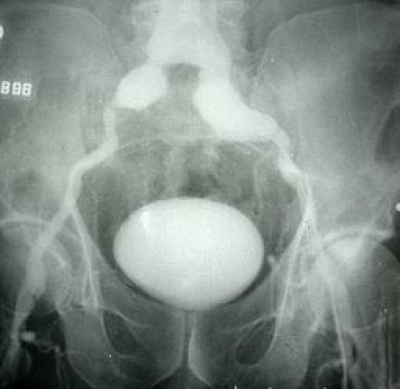
When a weak area of a blood vessel expands or bulges significantly, physicians call it an aneurysm. Most aneurysms occur in the aorta, your body's largest artery. The aorta carries blood away from your heart to the rest of your body. The part of your aorta located in your chest is called the thoracic aorta, and when your aorta reaches your abdomen, it is called the abdominal aorta.
Peripheral aneurysms affect the arteries other than the aorta. Most peripheral aneurysms occur in the popliteal artery, which runs down the back of your lower thigh and knee. Less commonly, peripheral aneurysms also develop in the femoral artery in your groin, the carotid artery in your neck, or sometimes the arteries in your arms. A special type of peripheral aneurysm that forms in the arteries feeding the kidneys or the bowel is called a visceral aneurysm.
If you have a peripheral aneurysm in one leg, you are more likely to have an aneurysm in the other leg. You also have a greater chance of having an aortic aneurysm.
Aortic aneurysms can cause serious complications because they can burst or rupture. Peripheral aneurysms do not rupture as often as aortic aneurysms, although they can do so. However, peripheral aneurysms more commonly can form clots that may block blood flow to your limbs or brain. Peripheral aneurysms, especially if they are large, can also compress a nearby nerve or vein and cause pain, numbness, or swelling.
What are the symptoms?
You may not feel symptoms with a peripheral aneurysm, especially if it is small. Two out of 3 patients with a peripheral aneurysm may not notice any symptoms.
If you do have symptoms, the warning signs will depend on the location and size of your aneurysm. Possible symptoms include:
- A pulsating lump that you can feel
- Leg or arm pain or cramping with exercise, called claudication
- Leg or arm pain with rest
- Painful sores or ulcerations involving the toes or fingers
- Radiating pain or numbness in your leg or arm, which is caused by nerve compression
- Gangrene, or tissue death, which results from a severe blockage in your limb and usually requires some form of amputation
If the carotid artery is involved, the symptoms can include transient ischemic attacks (TIA) or stroke. These are described in the sections on carotid or cerebrovascular disease. If the bowel arteries are involved, the symptoms can be similar to those for mesenteric ischemia and are described in the section on mesenteric ischemia.

